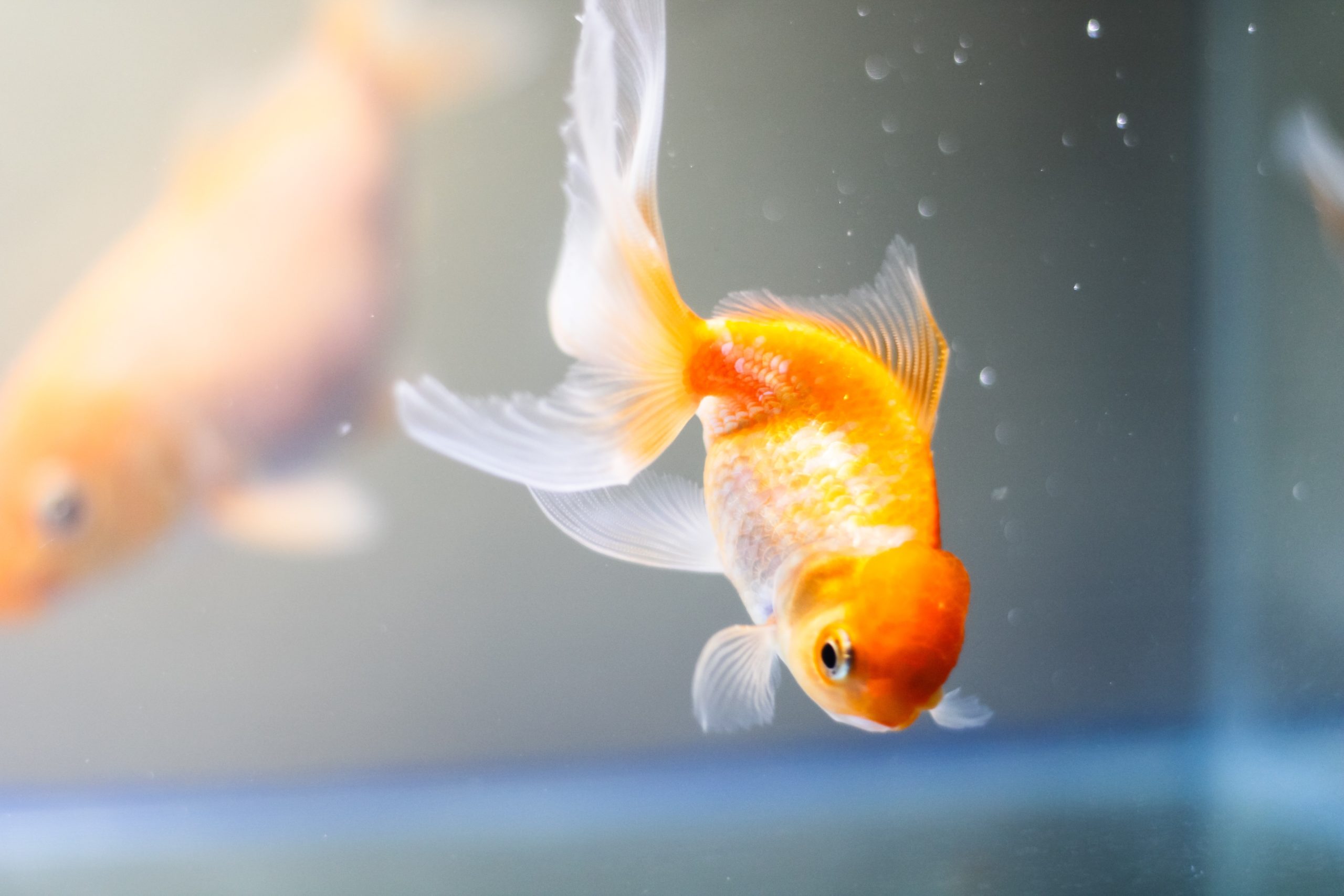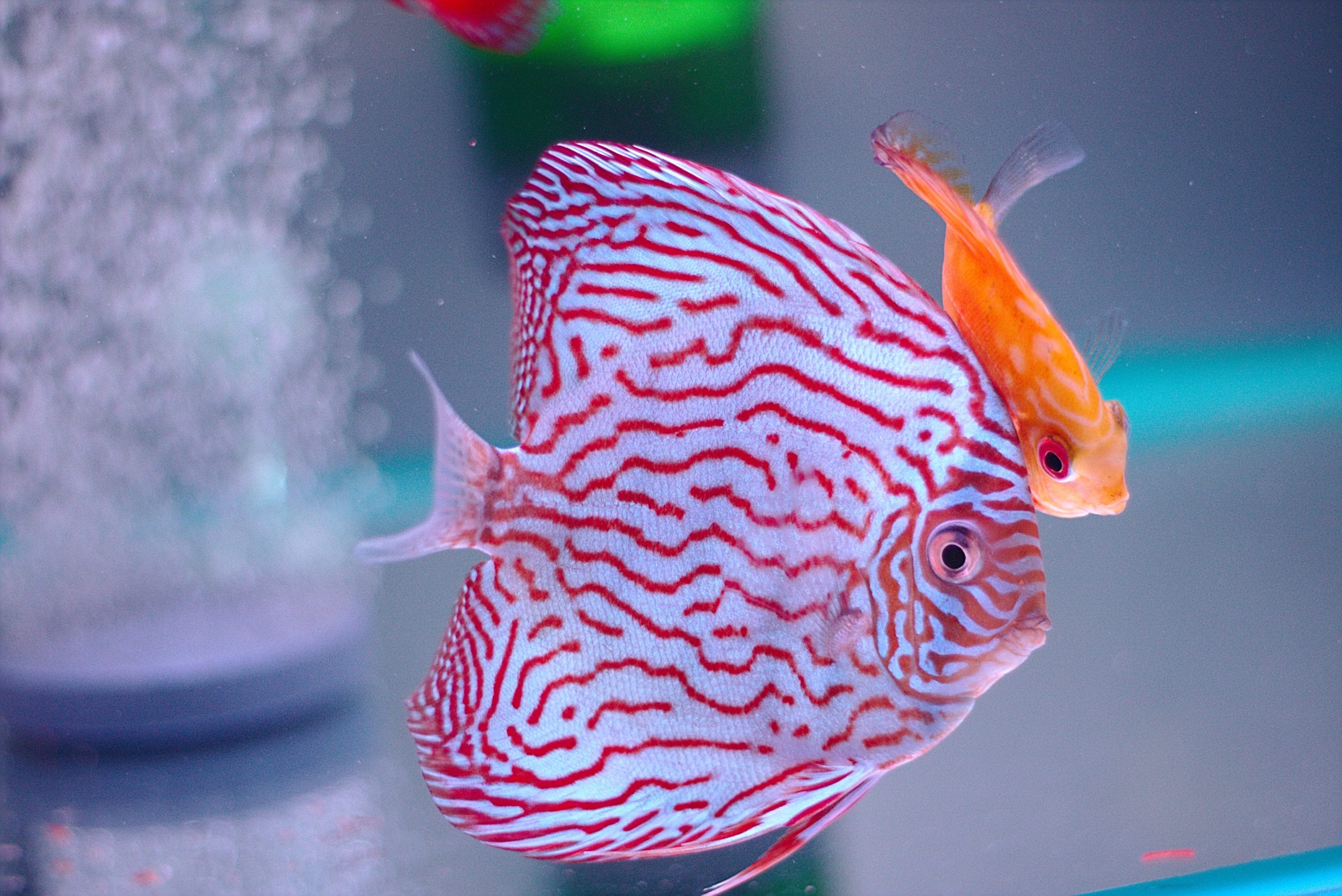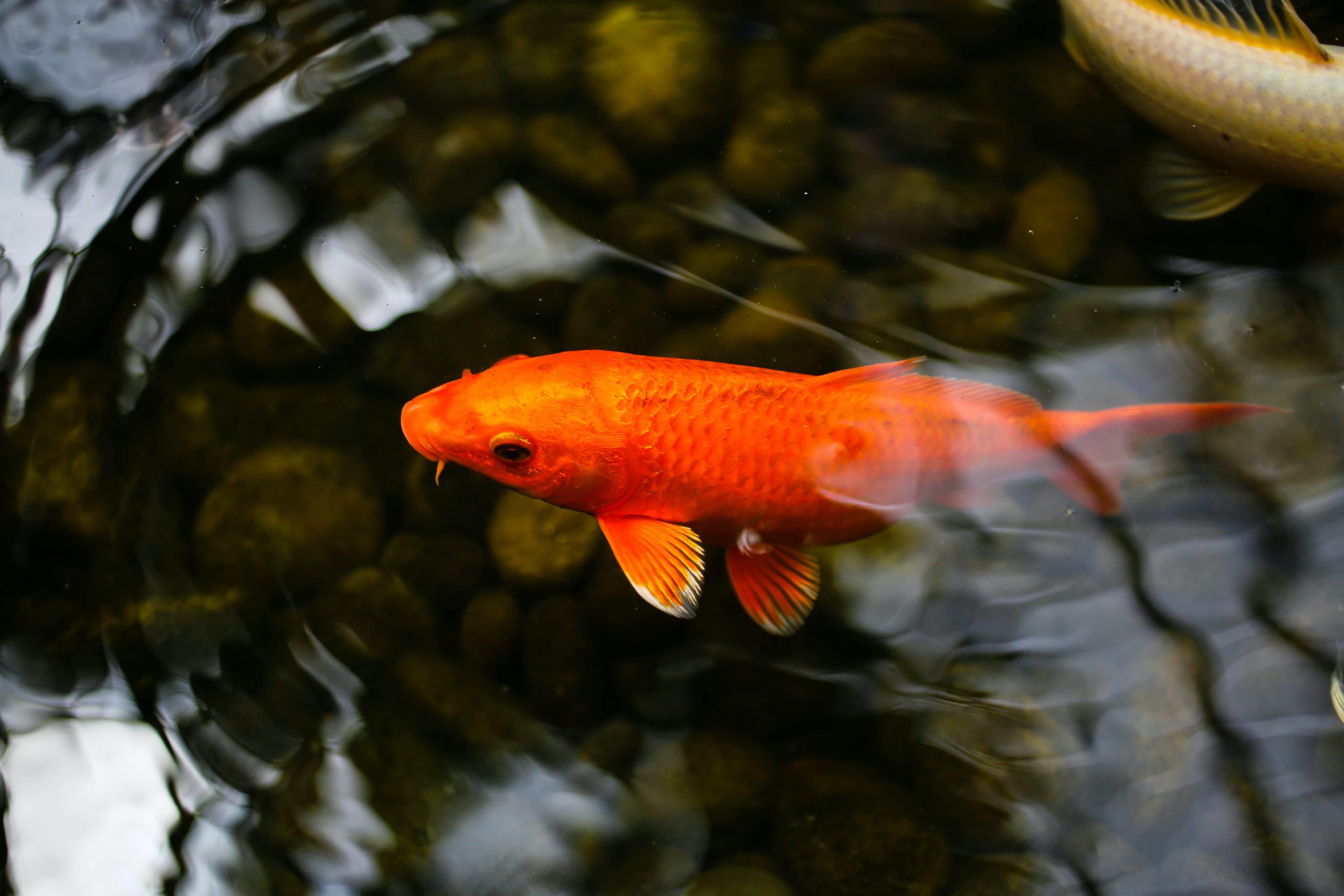Goldfish (Carassius auratus) are colourful, peaceful, have a long lifespan and are intelligent! The ancestors of this species originated in China and were of dull brown colouration. They have been selectively bred by the Chinese over the centuries to develop the different colour, scale and body shape morphs we see today.
The Comets, Shubunkins, Fantails, Veiltails, Telescope Moors, Pearl Scale, Orandas, Ranchu, Lionheads, Pom Pom, Bubble Eye and Celestials are only a few of the breeds of this single species available. Those ‘Panda’ coloured individuals (orange/black or white/black) are in the process of changing colour and may turn completely orange or completely white. It is a natural occurrence that is not very well understood, but is assumed to be related to hormonal changes as the fish matures. Body colouration will become more brilliant from exposure to natural sunlight. Depending on breed, goldfish can attain a length of between 10-20cm, with a lifespan of 20 years.
Choosing a healthy Goldfish
- Body colouration should be clear and bright, fins held erect, fish should be alert and swim without undue effort.
- Do not choose a fish that sinks or bobs to the surface, have lumps, bumps, or wounds or clamped fins.
- Fish should not have a trail of excreta from their vent and they should not be ‘sulking’ in the corner.
- If you have any concerns, consult your veterinarian.
Goldfish care
Goldfish, will thrive if water conditions are kept at their optimum. They prefer temperatures between 16-22°C (although they can tolerate temperatures below 8°C, their immune system is suppressed at temperatures below 15°C), a pH of 7.0-7.5 and a water hardness (GH) of 150ppm. Tests can be performed on your tap water to check its suitability for goldfish. If there are deficiencies, water conditioners are available.
Because goldfish are heavy feeders and produce a lot of waste, efficient aeration and good filtration is needed to maintain water quality. 25-50% partial water change is recommended every 2 weeks using a gravel siphon. If using biological filters, these should be rinsed lightly in a bucket of aquarium water before it gets clogged up or monthly (whichever occurs first).
Goldfish reproduction
This is only possible when fish are sexually mature, at about one year of age. Males develop breeding tubercles on the operculum (gill covers) and along the first ray of the pectoral fins, whilst females are more plump. They are egg scatterers, whereby the male is often seen chasing the females at spring time (coinciding with elevated temperatures after a cool break), the females are stimulated to expel her eggs and the male fertilises them with his milt.
There is no parental care, in fact, these eggs or newly hatched fry may be predated upon by their own parents. Bushy plants or spawning mops should be used along the sides of the tank or pond during these times, and the eggs removed and raised separately.
Goldfish dietary requirements
Goldfish feed at all levels of the aquarium and will accept most foods. However, their diet should contain a relatively higher carbohydrate level. Small floating pellets are best in terms of keeping that tank clean as excess food can be easily removed. The smaller size pellets also ensures that all fish get their share. It is important not to overfeed as it could cause indigestion and/or contaminate the tank. Food intake of a mature fish is about 1-2% of its body weight.
A rule of thumb in goldfish is to feed only as much as the size of its eye. Divide this amount of food into 2-3 portions to be fed over the day. For variety, this diet can be supplemented with, for example, small invertebrates, duck weed and scalded peas (skin removed). Mammalian fats (e.g. from beef heart, meat, offal) are poorly digested in fish, especially if the water temperature falls below 15°C at any time. All fat must be trimmed off and this type of food should only be used sparingly. Feeding should be limited when water temperatures fall below 8°C because, being homoeothermic (cold-blooded), they are not capable of digesting food.
Compatibility
Goldfish are not aggressive and can be kept with most community fish larger than its mouth. Those with extended fins should not be kept with fish that nip fins (e.g. tiger barbs). And the more bizarre varieties such as the Celestial should be kept with their own variety as it may find locating and competing for food difficult.
Vet check
Water testing should be conducted every 2 weeks or when performing a water change. It is recommended that your fish be vet checked in autumn and just before spring to ensure they have full health going into the stressful periods.
If you are unsure of a problem that exists in your fish or your tank, do not hesitate to contact your local veterinarian with fish expertise or a veterinary diagnostic laboratory.





